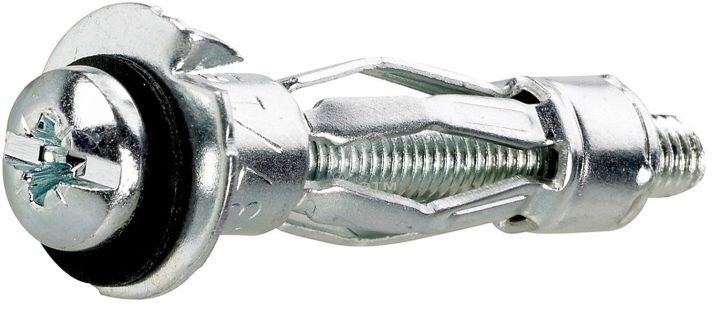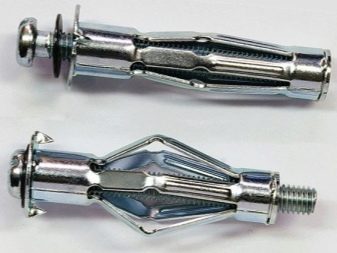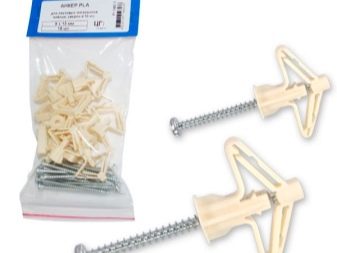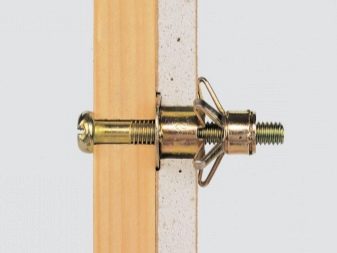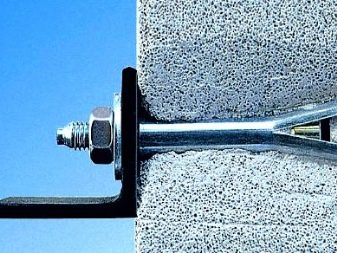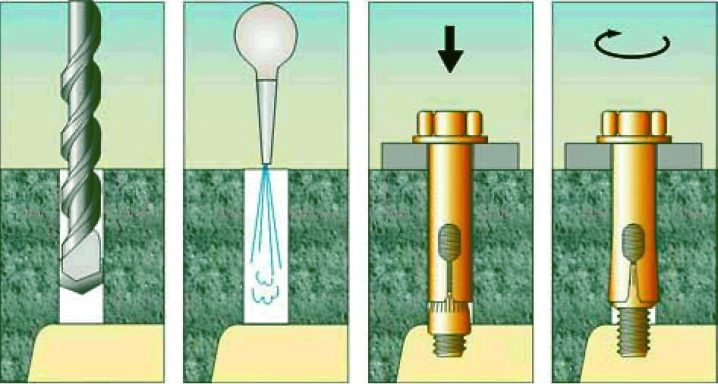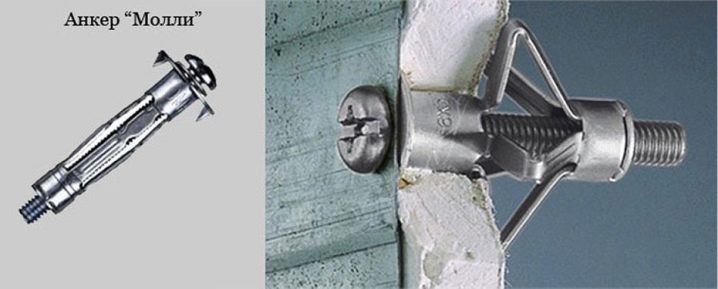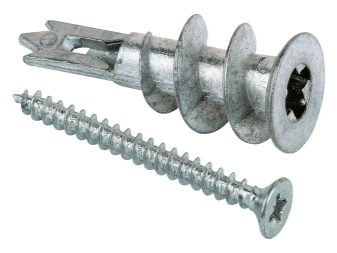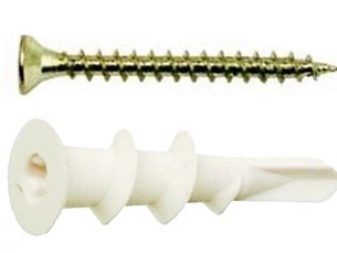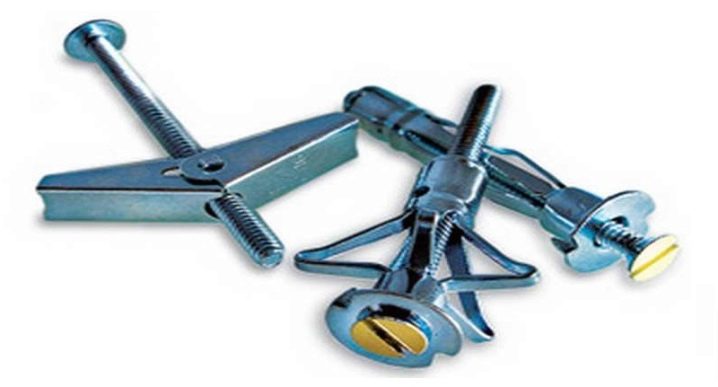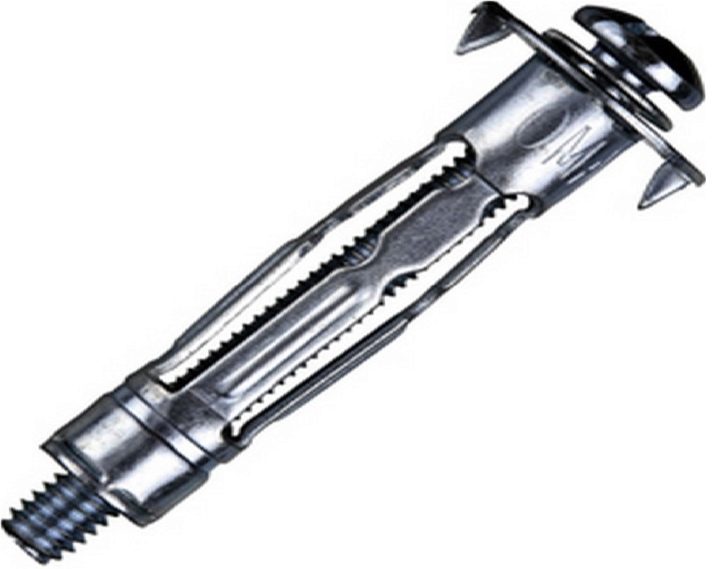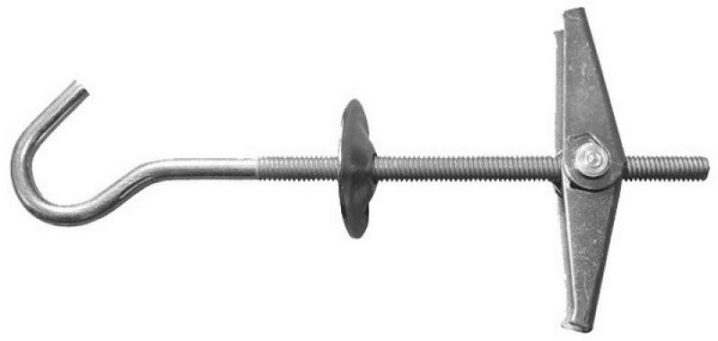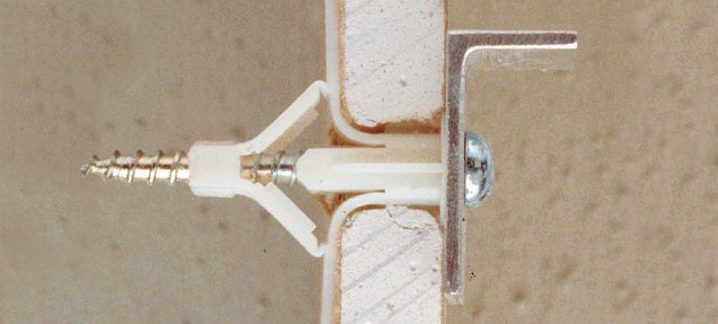Drywall Anchor: Types and Applications

Anchor is a very reliable fastening element of various materials. The area of its application in construction and finishing works is very wide. However, not all anchors are equally suitable for various types of fasteners. In this article, the types and models of drywall anchors will be discussed in detail, the features of their choice and use.
Specifics
Any type of anchor bolt is a fastener design, consisting of the following parts and elements:
- internal screw bolt;
- housing;
- plastic or rubber gasket;
- nut.
Anchor for drywall differs from other types in that it is able to hold in hollow materials and structures.This is possible thanks to special spacers. The spacers rest against the edges of the hole on the sheet and, thereby, keep the entire sleeve inside.
With the help of anchors of this type, installation of walls, ceilings and other structures, as well as fixing of various elements to the bases of gypsum boards, is carried out.
Anchor fasteners for drywall can be plastic and metal.
The fasteners for drywall are divided into 2 types:
- Passage design. With the help of such an anchor, various hanging elements are mounted on the ceiling.
- Expandable design (spring). This type is suitable for attaching any structures to plasterboard walls.
Mounting features
In order to properly install anchor fasteners, you must adhere to a specific algorithm.
- In the drywall sheet you need to drill a hole of the required diameter.
- The hole should be cleaned from dust, dust and debris. Then you need to place the anchor itself in it, while holding the folding elements of the fastener.
- After placing the element in the hole, the anchor should open up inside.
- The anchor bolt must be tightened as far as it will go,to ensure maximum fastener body space inside the hole. Screwing the screw will provide the most reliable fastening element.
Kinds
The fastener used for plasterboard products must have the following properties:
- the body and the bolt itself must have a corrosion-resistant coating;
- the material of the fastener must have high strength;
- The fastener must be provided with spacer elements: without them, a reliable fixation on the drywall is impossible.
There are several models of anchor fasteners, differing among themselves in purpose, appearance and performance.
- Fasteners Molly. It is one of the most expensive. It is made of steel alloy and has a zinc coating. The anchor has a high strength hull and bolt capable of withstanding high weight loads. There is the possibility of dismantling, without damaging the fastener. Since outwardly this type of fastener is similar to the handle of an umbrella, it has a second name, the dowel umbrella. The fastener is capable of loading up to 35 kg.
- Fasteners Driva. At the moment it is one of the most popular and demanded in the Russian market. Combines high quality and affordable price.Fasteners are available in two types: plastic and metal. Plastic fasteners are designed to hold a weight of up to 25 kg, and metal is able to hold more than 32 kg. This anchor does not need free zalistovo space, which is a significant advantage. The difference between fasteners is that when installing it is not necessary to use a drill. At the end of the anchor there is already a drill, so you can screw it into the sheet with a screwdriver.
Reliable fixation of the fastening element provides a high thread, thanks to which the drywall does not crumble. The fixture is suitable for a double giposkarton.
- Dowel butterfly Most often fasteners of this type can be found from the manufacturer Fischer. This fastener is made of polypropylene and has a relatively low cost - just from 0.3 rubles. Suitable for hanging and attaching structures and items of low weight. The maximum weight load is only 20 kg.
However, if you plan to mount relatively light elements, the use of such an anchor will be very economical and justified.
- Chemical anchor This type of fastener is a capsule with an adhesive.When mounting the capsule is deformed, its contents are mixed and reacts.
As a result, a high-strength adhesive compound is formed, which ensures reliable fixation.
Possible marriage
Unfortunately, in the manufacture of fasteners technology is not always respected. Buyers are faced with the presence of marriage, which significantly impairs the quality of work.
When choosing anchors should pay attention to some points:
- Measure the diameter of the bolt and make sure that it matches the manufacturer’s stated specifications. Other sizes must also strictly comply with industry standards.
- There should be no rust on the fastener. Its presence indicates an insufficient amount of anti-corrosion coating, or its complete absence.
- Pay attention to the bolt thread. The notch should not be rare and weak.
- The tip should be sharp enough.
- The product should not be burrs, chips and obvious surface roughness.
- Carefully inspect the plastic plug dowel. It should not be overflows.
Tips for choosing
The quality and durability of the gypsum-cardboard construction depends on the correct choice of fasteners, therefore, when choosing a material, you must follow certain rules.
- It is recommended to buy fasteners for drywall and other materials only in specialized, well-established stores and retail outlets.
- Always consult with the seller about the maximum mass load for a particular type of attachment. Do not seek to save money by buying weaker hardware. This is fraught with possible tearing of the fastener due to excessive load.
- Do not save on the material of the fastener. Plastic fasteners are cheaper, but inferior in strength.
- If you need to attach drywall to a solid, solid foundation (brick, concrete, wood), you should choose metal anchors.
- With the wrong choice of anchor fasteners, you risk getting injured during work, as well as reduce the strength of the fastening structure.
In the next video you will see a comparative review of various types of anchors.

